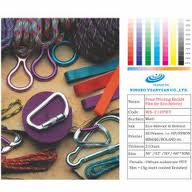Product (256)
- Inkjet Media (108)
- Eco-Solvent Inkjet Media (55)
- Art Canvas (37)
- Solvent Banner (30)
- Display Stand (24)
- Others (2)
Exhibition information (1)
Blog (6)
Inkjet Art Canvas (1)
Certificates (1)
Credit Report
Products Index
Company Info
Ningbo Yuanyuan Co.,Ltd. [China (Mainland)]
Business Type:Manufacturer
City: Ningbo
Province/State: Zhejiang
Country/Region: China (Mainland)
Blog
How Can I Get The Best Black Colors In My Backlit Film?

Customers often ask, which type of Backlit Film will yield the best black color? Or, they often ask in terms of, how black is Duratrans?
First, allow me to clarify Blue River Digital's definition of "Duratrans." To many, the term "duratrans" refers to any backlit graphic film that can be imaged with color artwork. This is partially accurate, and may be useful in lay conversation.
For purposes of the question about blacks, I would like to clarify that when a customer orders Duratrans backlit film from Blue River Digital, they're getting a photographic film that is optically exposed (laser) and chemically developed, similar to old-school photographic film. Some of the advantages of this process include improved color saturation and resolution, over the competing "inkjet" (non-photographic) process, which we also offer as "Economy Inkjet."
As a chemically-developed film, when you image part of a Duratrans as black, the film is fully emulsified at the black point (for those in photography, the black point has a very high D-max in the 3.7 range). The emulsion simply blocks any light that would pass through. The result is a black similar to a gloss automotive paint, in depth and richness. Mathematically, there is still a bit of light that makes it through even the emulsion, but Duratrans is the process of choice for all high-end commercial and fine art backlit graphics, because of the superior contrast and saturation. Black-accented artwork on Duratrans is very striking and appealing because of this.
To my knowing there is really only one, hand-crafted method commercially supplied for backlit pictures that could compete with Duratrans for dark opacity, and it's obtained other limitations, not the very least of that is price.
As for that financial environment Inkjet backlit product, it is inferior to Duratrans in conditions of blacks for that very simple induce that dark ink is not completely opaque, as could be the emulsion coating on the Duratrans. The components of ink that need it for getting viscous and transmissive work in opposition to the opacity vector to final result within of a somewhat-compromised blackness with all backlit inkjet films (regardless of what the fabricator may possibly say), noticeable typically in seem dark areas, specifically if they're large.
Hopefully this could help using the choice method for you, in evaluating backlit movement image alternatives.
Pre Page:
Wet Application of Self Adhesive Vinyl
Next Page:
Golden Inkjet Photo Paper



